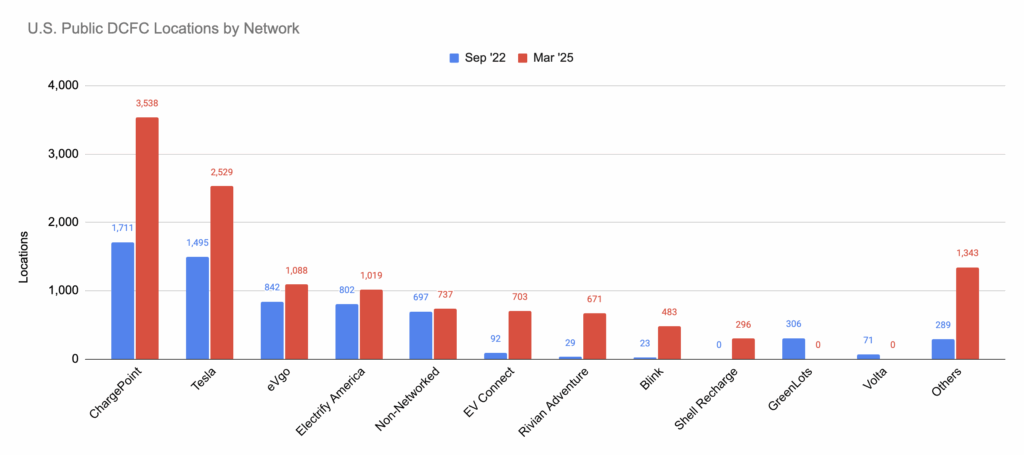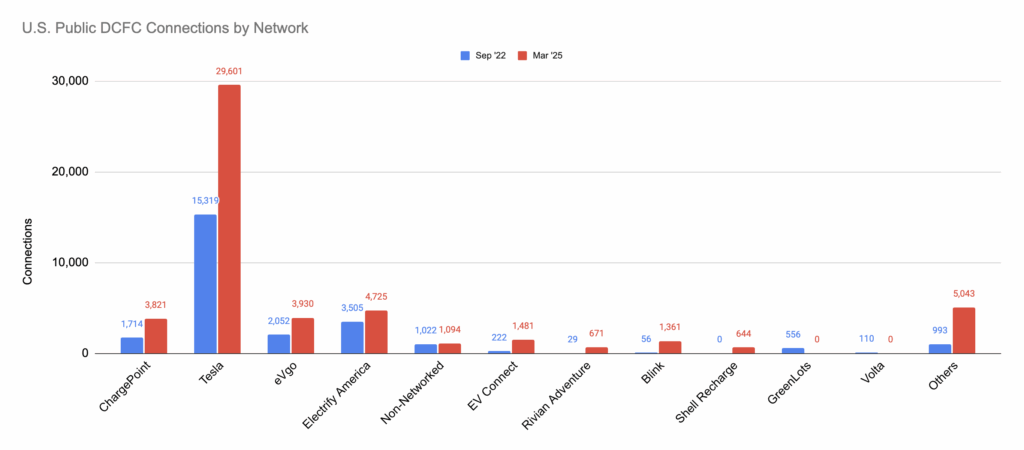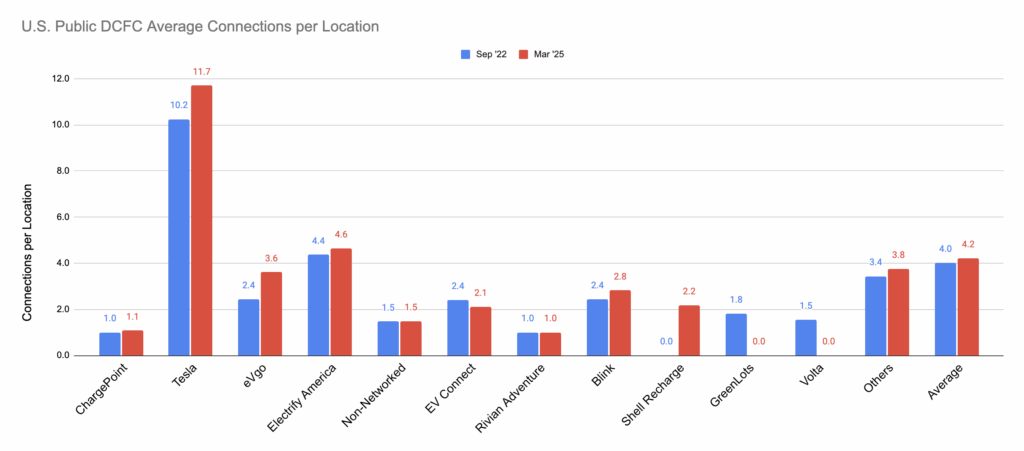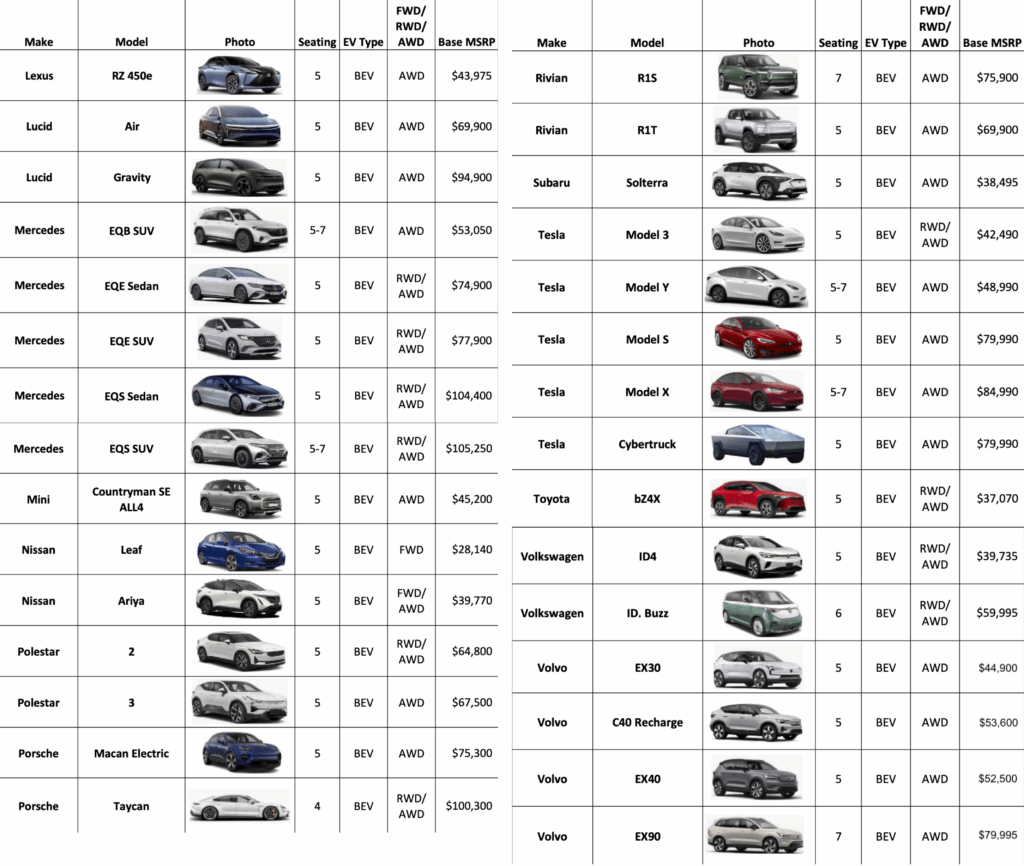Modern societies in the last 100+ years developed along side, and are enabled by, internal combustion engine (ICE) technology. But the future always arrives through replacement of older technologies with newer, better ones, and social behaviors evolve to adopt the new tech.
As the following chart shows, new technologies often follow an S-curve; starting slowly and accelerating exponentially before leveling off.

This post aims to demystify several aspects of electric vehicle (EV) ownership and cushion the future shock of ICE vehicle obsolescence. We’ll dispel some myths and explore some common barriers to EV ownership. (2025 update, except for a few rare edge cases, barriers are psychological and not based in reality.) The assumption is that the reader is starting with little or no knowledge about EVs. The millions of people who already own an EV are already aware and have overcome these barriers, experiencing the many advantages of EV ownership.
Charging convenience
Charging is the key to some other concerns, and is also the least well understood by the uninitiated. The most surprising aspect is that all home owners (and at an ever-increasing number of renters), can do most charging at home. Multiple surveys show that on average, home charging covers 80 to 90 percent of the total.
Home charging typically involves installing a wall mounted device, called an “EVSE” (electric vehicle service equipment), but this is not required. Every EV comes with a portable EVSE, commonly called a “charging cable”, that can plug in to any 120 V outlet, and this cable can add around 50 miles of range every night while you sleep (over 18,000 miles/year). (2025 update: Tesla is the exception and no longer supplies a Tesla Mobile Connector with new cars.) This means with no extra equipment, EVs can “refuel” at any garage or outdoor AC outlet. At a cost of $0.12 / kWh, that 50 miles of range will cost around $1.50.
Sometimes when asked “How long does it take to charge?” I answer “About 5 seconds” because that’s the time it takes me to grab the charging cable off the holder, open the car’s charging port and plug in. So, yes, a large majority of charging is more convenient than stopping at a gas station.
But what about road trips? Away from home, the answer is currently in two parts: Tesla and everyone else. (2025 update: new EVs from most manufacturers are now compatible with Tesla Superchargers via an adapter and some are now shipping with a Tesla NACS port. This transition should be mostly complete in 1-2 years.) DC fast chargers (DCFC) of both types now cover all major highway routes in the US and Canada. Teslas and most new EV models can add 150 miles in 20-30 minutes at these chargers, making cross-country travel straightforward and convenient. See What’s up with NACS (Tesla’s charging connector)? for details on the current state of Tesla Supercharger charging of non-Tesla cars.
Alternative Fuels Data Center map. Controls can be used to see CCS (default), J3400 (NACS) and level 2 chargers.
CCS chargers outnumber Tesla locations, although Tesla still leads in total connectors. More connectors concentrated where the cars are means the Supercharger network can serve more cars with no waiting. With the majority of new cars now being Tesla Supercharger compatible, there is no longer an advantage to Teslas when it comes to road trips.



Range between charges
The complementary factor to charging speed and availability, is range on a single charge, which is a property of the vehicle’s battery energy capacity (measured in kWh) and efficiency (mi / kWh, or Wh / mile). Here again, Tesla has led the industry, but all EV manufacturers (all major automakers) now have models with >200 miles of range on a full charge. This is where ICEV experience creates a persistent misunderstanding.
Knowing an ICEV is typically driven 200 miles before refueling, leads to an assumption that this is a minimum requirement. But this neglects the EV’s main advantage of home charging. Think of having a gas pump in your garage that ensures you start every day with a full tank. How far do you need to drive in a day? In the US, the average is around 30 miles.
Since daily driving is positively skewed (a few people drive much further than average and the number can not be below 0), a large majority of daily trips are under 50 miles (the range added overnight using a 120 V plug). Nearly all EVs on offer today have at least 200 miles of range, so the daily trips that an EV is suitable for already approaches 100%.
Cost
Tesla has been synonymous with electric vehicles and their locus in the near-luxury market has led to a general belief that EVs are more expensive to buy. While there are not yet any “economy” EVs in the US market (unlike Europe and China), the average cost today of an EV model is on par with equivalent ICE models.
But purchase price is only half the story. The simplicity of an EV drivetrain, with about 10 moving parts and no high combustion temperatures and corrosive byproducts, means that there are far fewer maintenance items than an ICEV.

Adding in the lower cost of energy (electricity vs. petrol) means that operating costs are far lower than with an ICEV. For any given side-by-side comparison of EV vs. ICEV total cost of ownership, there is a break-even milage, beyond which the EV continues to save money for the rest of its service life. And, EVs are lasting longer than ICEVs. EV batteries in particular are lasting far longer than the average vehicle, so battery replacements are rare and due to manufacturing defects (or a poor design like early Nissan LEAFs), not wear out.

Availability
The above barriers are mostly misconceptions or outdated ideas that have been eliminated with the current crop of EVs. But you can’t purchase an EV that you can’t find on dealer lots. There are many reasons why the supply of EVs is still well behind demand but it is easy to see why the incumbent fossil fuel and automotive industries have built-in incentives to resist the change. Legacy automakers need to retool manufacturing lines and supply chains, while their dealership networks lose a large part of lucrative service revenue. And the oil industry is set to lose its entire transportation market.
Many credit Tesla with dragging the rest of the auto industry into the future by building compelling products that eliminate consumer objections and barriers like range, charging and cost with products that are high-tech and fun to drive. On August 5, 2021, the White House announced support for 50% of the US fleet to be zero-emission, and the big 3 automakers (Ford, GM and Stellantis) followed with a similar announcement of their own. While this is just the latest in a series of announcements by legacy automakers, there can be no doubt that EVs are the future of transportation.

Compare the above plans with models available for sale today (see link to EV Info list below for full details).


Barriers remain have been overcome, but they are falling and have fallen like dominoes with advancements in technology, manufacturing capacity, and government support. There should be no doubt that this transition is critical and overdue. Now is the time to put gasoline and diesel fuels in the rear-view mirror and find an EV that meets your needs. Here are some resources (Minnesota-focused) to get you started.
- List of available EVs: www.EVInfolist.com
- I need more information to decide: www.MNEVBuyer.com
- I would like to talk with existing owners: MNEVOwners.org
- How can my utility company help? www.MNCharging.org
Very interesting and compelling post. I have a 52 mile/day normal drive, and my electric 2015 Nissan Leaf (85 mile range) doesn’t have quite enough range on stormy winter days, due to the hilly terrain. (A 20 minute charge is all I need.) A 120 mile battery range vehicle would be more than sufficient all the time.
Thanks for the comment, Bob!